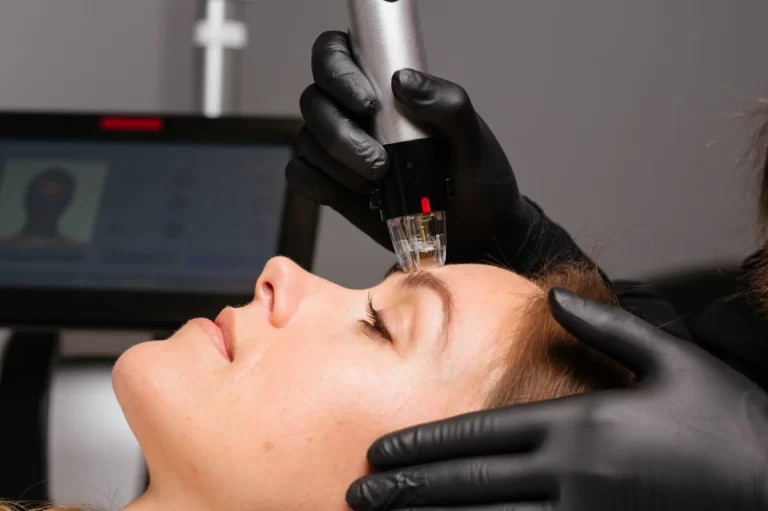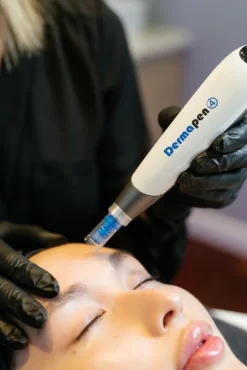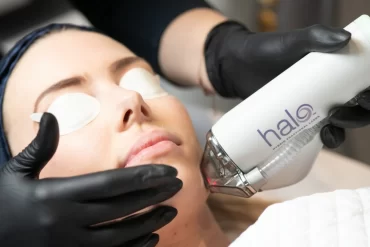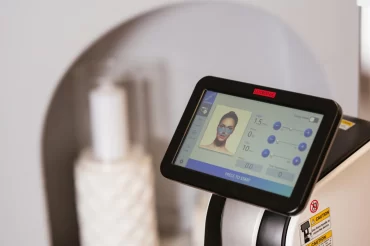Scarring

Scarring occurs after injury to the skin and is a normal part of the body’s wound healing response. A normal scar is red and occasionally raised, however will normally heal over a few months to become pale and flat.
Scars can occur after any injury to the skin and some people are more prone to scarring than others. Scarring can be prominent and cause significant concern, especially acne scarring, hypertrophic scars and keloid scars.
Post scarring pigment changes can also occur causing redness and hyperpigmentation.
FAQs
What causes scarring?
Some of the common types of scars that we treat at Youth Lab include:
Hypertrophic scars
If a wound is impaired (eg infected) or there is tension on the wound then a hypertrophic scar may form. These are raised, thicker scars which may also be red in colour
Keloid scars
These scars are abnormal scars where the exact cause is not fully known. They are more common in darker skin types and can occur immediately following an injury or many months later. They are firm, raised and can be red in colour, they often extend over the borders of the original wound and can occur even after very minor injury to the skin, such as bites. They can be painful, itchy and cause significant distress to those who have them due to the cosmetic appearance.
Acne scarring
Moderate to severe acne can result in post acne scarring (this occurs in 30%). This may include; small pitted scars, post-inflammatory hyperpigmentation and ice pick scars (deep and narrow), atrophic/depressed scars and rolling scars. Acne scarring occurs when the congested unit ruptures, releasing its content into the dermis. The skin is unable to produce enough collagen to repair itself, leaving a depression in the dermis. It is important to seek treatment for acne early to prevent scarring which is more difficult to treat.
Stretch marks
These occur when the skin has been stretched and are very common following puberty, pregnancy, weight gain and after certain hormonal changes. Stretch marks, or striae, can occur on any part of the body but are most common on the breasts, abdomen and thighs. They appear as red or purple when they are fresh and will slowly fade over time to appear white or silver. They are depressions in the skin due to depletion and damage to the collagen fibres. They often become less noticeable but can be distressing for some individuals.
Post inflammatory colour changes
Scarring can result in changes to skin colour such as hyperpigmentation and redness.
How should a new scar be treated?
The majority of scars will settle over time and become less noticeable, such as hypertrophic scars and stretch marks.
Other types of scars such as keloid scars and acne scarring on the face can persist and be devastating to the individual. Scars are generally quite difficult to treat and can persist and be resistant to treatment. A combination approach is generally used.
Generally, a conservative approach is tried initially and the prevention of scarring is the most important factor. Using topical treatments such as regular moisturisers and emollients is important, even immediately post surgery.
Certain cosmeceutical brands make scar specific ointments. Results of all clinical scar treatments are further enhanced and maintained with the use of appropriate skin care. This must be continued during the treatment course.
Silicone gel and silicone scar reduction patches are very effective for surgical, hypertrophic and keloid scars. These must be applied constantly (24 hours a day) and treatment often continues for many months. Certain prescription silicone gels will be provided during scar treatments to enhance the results of other treatment methods.
Pressure therapy is another option which can be combined with topical corticosteroids and silicon over a long period of time for hypertrophic and keloid scars.
How do we treat older or more severe scarring?
The doctors at Youth Lab also use Intralesional corticosteroid injections to treat older scarring. This is where injecting hypertrophic and keloid scars with corticosteroids can treat the underlying inflammation. As a result, this bypasses the thickened and damaged top layer of skin (unlike creams), reduce the incidence of thinning the skin and provide high concentrations of steroid to actively treat the scar.
The treatment is quick and relatively pain free, occasionally the steroid is mixed with anaesthetic to increase comfort. Treatments are repeated every 4-8 weeks until the scar has flattened out.
Sometimes surgical options need to be explored for some types of scars. These include subcision which is a surgical technique in which the fibrous band under the scar is divided, allowing the skin to return to its normal position or full excision of the scar itself.
There is always the risk of further scarring, especially if the individual is prone to hypertrophic or keloid scars.
What are our recommended treatments?
Other treatment options utilising non-invasive technology are performed within the clinic, often in combination with the treatment recommendations listed above.
As with many of the treatment recommendations at Youth Lab, a combination of treatments may be required for optimal results.
Please note that the below is a reference point and full treatment recommendations will be made following a consultation.
Skin Needling
Skin Needling utilises collagen induction therapy to stimulate the body’s natural wound healing response to produce healthy collagen and elastin which replaces the damaged scar tissue. These treatments are often combined with scar specific serum infusions to improve the condition of the skin within the scar.
Halo Laser
Fractionated ablative laser resurfacing is very successful in diffuse acne scarring. This works to stimulate collagen formation and remove damaged scar tissue. Fully ablative laser is one of the most effective treatments for scarring but is associated with down time.
Radiofrequency Microneedling
Working in a similar way to skin needling but with the addition of radiofrequency energy which works to stimulate a wound response with new collagen formation and destruction of damaged scar tissue.
Dermal fillers
Dermal fillers of varying thickness can be injected into the superficial layers of the skin to reduce the appearance of scars and stretch marks. These treatments are better for atrophic and rolling scars (acne scars).
TCA cross (medical peels)
TCA cross uses a very high concentration of trichloroacetic acid (50-100%) which is normally used as a resurfacing chemical peel. TCA cross is placed directly into ice pick scars resulting in protein denaturation and new collagen formation at the base of the scar.
Healite II LED
The Healite II LED 830nm wavelength can be used in the treatment of wounds, burns, bruising and post cosmetic injectables/laser. It can also be used pre-surgery to reduce the risk of infection and scarring.
BBL Corrective
Broadband light treatment can be used to treat the redness that is sometimes associated with scarring, as well visible blood vessels and hyperpigmentation. BBL will stimulate collagen production long term and assist with improving overall skin quality in the areas of scarring.




